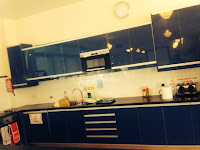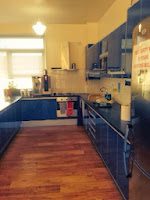The first scene will be shot on the 25th Feb- 'The Alley Way' scene. The alley we will be using, is the one around the back of the school. We will use this because it fits the image we had projected in our mind. It is also extremely accessible, therefore if we require some re-shoots, it is convenient for everyone to participate.
I have sketched out two possible ways of shooting this scene. Once this scene has been shot we can look further into various other camera angles that could be used if we are not happy with the result.
1st shot
This scene will begin with the use of an establishing shot. The use of this shot will give an initial overview of the scene that will begin. This shot will also trigger some sort of thought process, within the audiences' minds, as too what could possibly happen within this scene, therefore engaging the audience into the movie as it connotes the feeling of suspense. Following this establishing shot the scene will cut into a mid shot, of the drunk man's back. The use of this shot gives the audience a slight insight into this particular scene, yet still not giving away any clues as to what might take place in the rest of the scene- at this point the audience has not been told of any possible motives of where the drunk man is heading. Overall this shot does not allow any room for the audience to loose interest in the film, in fact it would engage them further. Last but not least, the final shot that will be used is a low angled shot. This shot will only show the drunk mans journey through his feet. This adds suspense to the scene because the audience is kept in the dark as to what is going to happen.
2nd shot
The second shot that could be used is similar to the 1st shot yet different in a way that could change the overall outlook of the scene. It uses the same shots but in a different order. However the establishing shot will remain at the beginning of the scene as it works best when introducing a new scene. The second shot that will be used is a low angled shot focusing on the footsteps of the drunk man, indicating his journey. The camera will change position to face the drunk man. The shot that will be used is is a close up to emphasise the emotion of the character, leaving the audience on a cliffhanger to ponder on what his intentions are.

